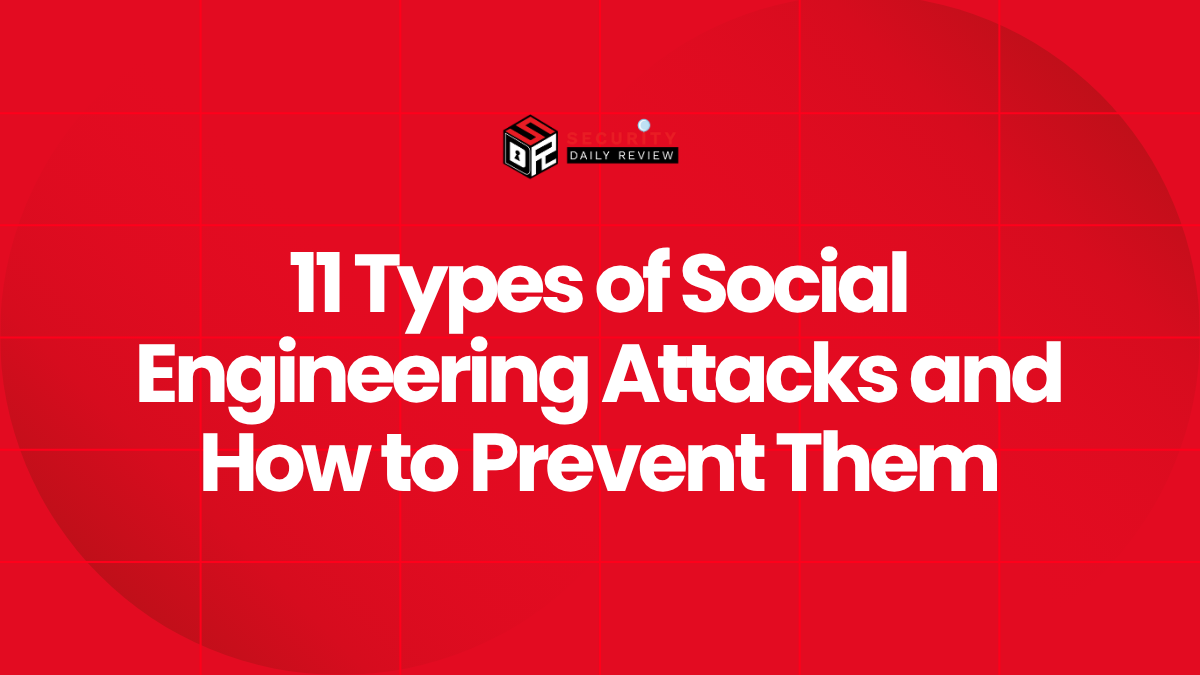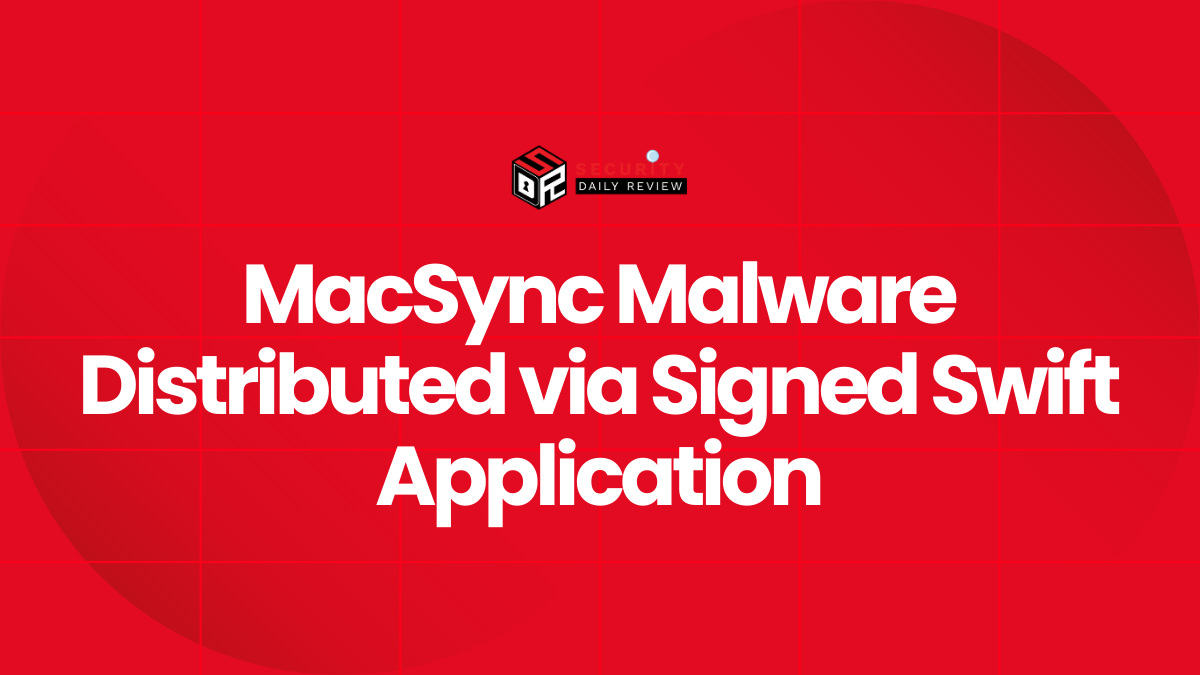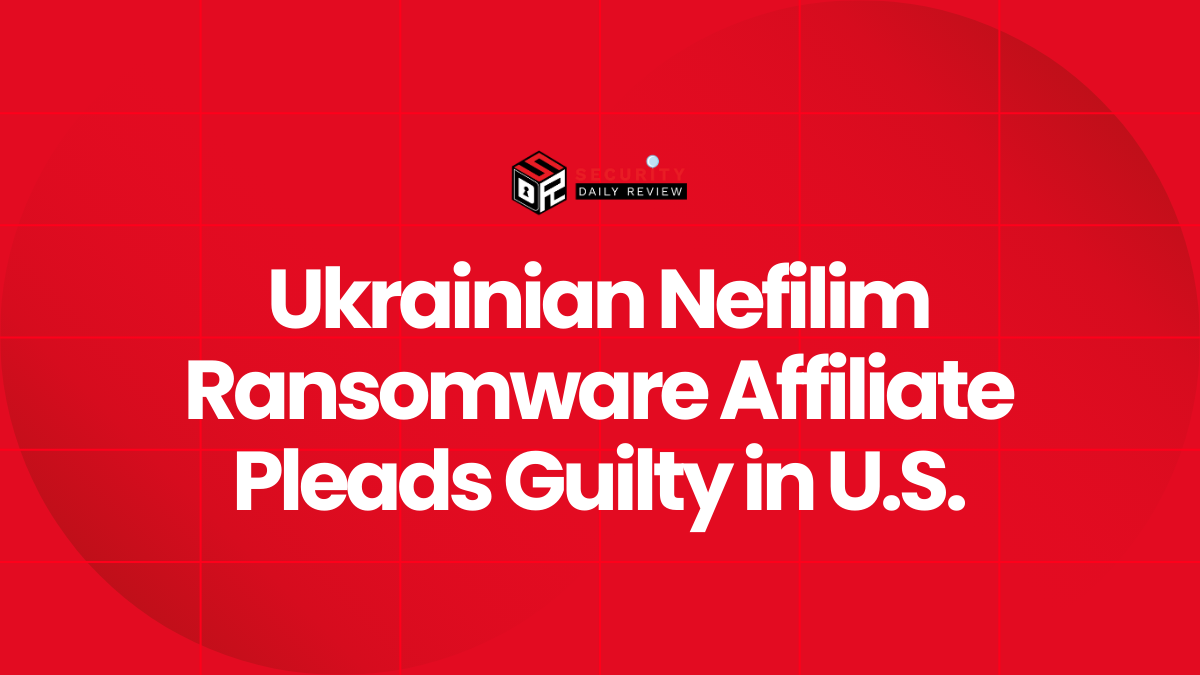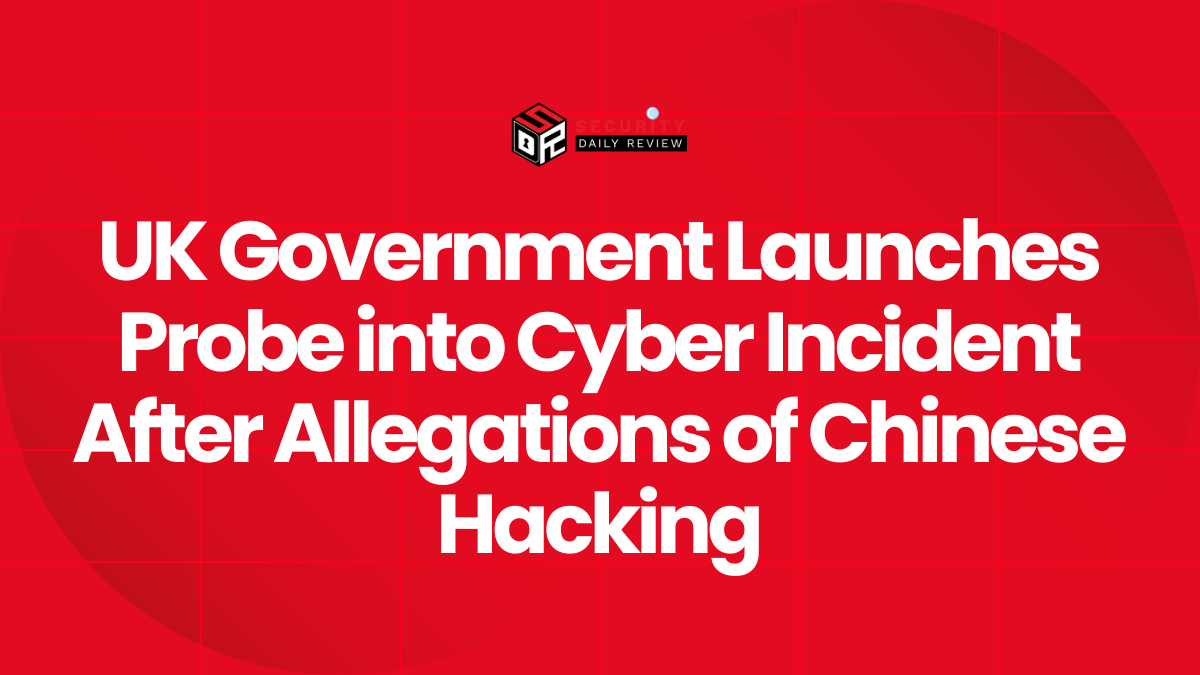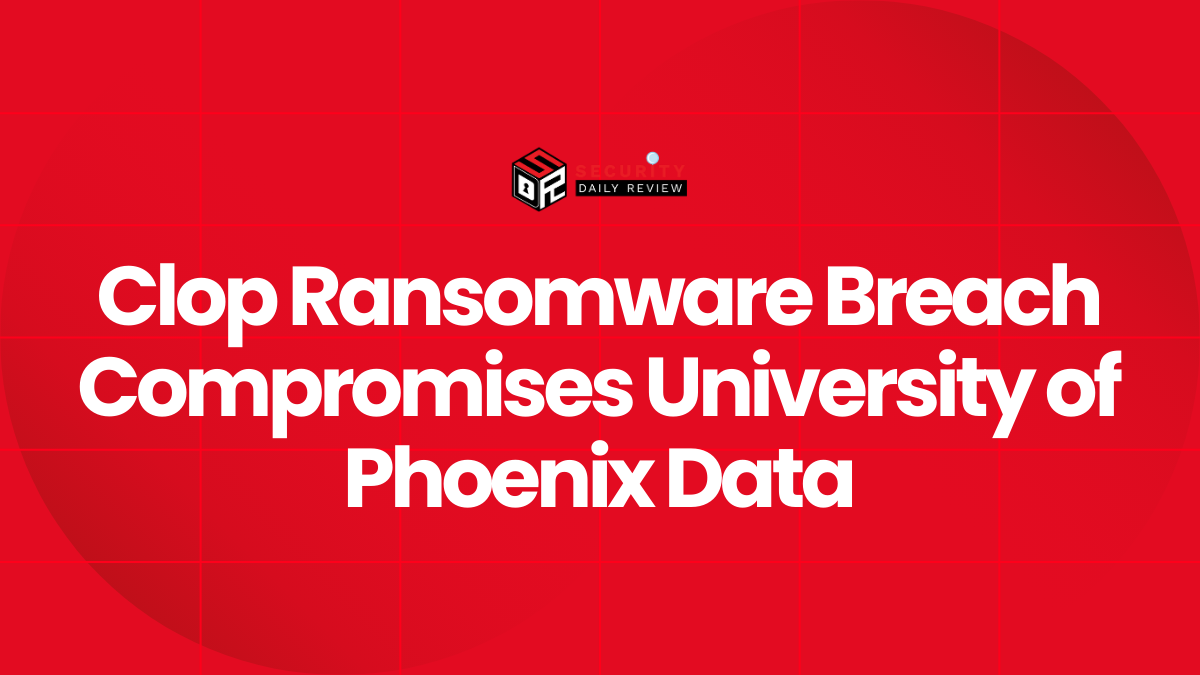Social engineering attacks pose a significant threat to enterprise security, resulting in substantial financial losses and a dramatic increase in data breaches. These attacks exploit human psychology, leveraging trust, fear, and urgency to manipulate individuals into divulging sensitive information or granting access to systems. Unlike technical exploits that target software vulnerabilities, social engineering attacks target the human element—the weakest link in any security chain.
The average cost of a successful social engineering attack is estimated to be $130,000 according to Firewall Times. These attacks are on the rise, with Verizon’s 2023 Data Breach Investigations Report highlighting their increasing prevalence. Furthermore, a considerable portion—between 70% and 90%—of data breaches are directly attributed to social engineering, as highlighted in KnowBe4.
This blog post outlines the 11 Types of Social Engineering Attacks and a multi-layered strategy to protect your enterprise, covering employee training, robust technical safeguards, comprehensive security policies, and a resilient backup and disaster recovery plan leveraging immutable, air-gapped storage to effectively mitigate the devastating impact of these attacks.
11 Types of Social Engineering Attacks
The following sections detail eleven common social engineering attack types, providing clear explanations and highlighting their unique characteristics:
1. Phishing: The Classic Scam
Phishing is the granddaddy of social engineering attacks. Think of it as the most common type of cyber attack. It uses deceptive emails, texts (smishing), or even social media messages. The goal? To trick you into giving up your personal information. Passwords, credit card numbers—they’re all fair game. Modern phishing is super sneaky. It often looks incredibly real. It might seem like it’s from your bank or a favorite online store. Phishing prevention starts with being suspicious of anything unexpected.
Attackers craft deceptive emails, texts or messages on social media platforms, mimicking legitimate organizations like banks, online retailers, or government agencies. These messages often contain urgent requests, threats, or enticing offers designed to manipulate victims into clicking malicious links or downloading infected attachments.
Sophisticated phishing campaigns employ highly personalized content, gleaned from publicly available information or previous data breaches, to enhance their credibility. For instance, an email might appear to be from your bank, warning of suspicious activity on your account and urging you to click a link to verify your details.
This link leads to a fake login page designed to steal your credentials. Effective phishing prevention involves skepticism towards unsolicited emails, careful examination of sender addresses and links, and utilizing robust email filtering and anti-spam software. Strong cybersecurity awareness training for employees is crucial in mitigating the risk of phishing attacks.
Hover over links before clicking. Check the sender’s email address carefully. Don’t fall for urgency tactics. Learn to spot phishing emails to protect yourself.
2. Whaling: Targeting the Big Fish
Whaling is like phishing, but with a much bigger target. Instead of random people, whaling attacks focus on high-level executives. These individuals often have access to huge amounts of sensitive data. Attackers spend a lot of time researching their target. They personalize their attacks to make them more convincing. Think of it as a very personalized phishing attack.
Unlike mass phishing campaigns, whaling attacks involve extensive research on the target, gathering information from social media, news articles, and other public sources to personalize the attack and increase its success rate. Attackers may spend weeks or even months meticulously crafting their approach, building a relationship with the target before launching the attack.
The goal is to gain access to sensitive information, financial resources, or critical systems. For example, a whaling attack might involve an email appearing to be from a trusted business partner, requesting a large wire transfer under urgent circumstances.
Whaling prevention requires robust security measures, including multi-factor authentication (MFA), advanced email security solutions, and specialized security awareness training for high-value targets.
3. Baiting: The Allure of the Freebie
Baiting uses the lure of something free or desirable. A free software download, a tempting online promotion—it all looks too good to be true. And often, it is. Clicking on that link could install malware on your computer. Or it could give hackers access to your accounts. Baiting is a clever social engineering tactic. Physical baiting also exists. Imagine finding a USB drive and plugging it into your computer—it could be infected.
For instance, attackers create enticing offers, such as free software downloads, discounted products, or exclusive promotions, often distributed through seemingly legitimate websites or social media channels. These offers often lead to malicious websites or downloads containing malware, keyloggers, or other malicious software.
As an example, a baiting attack might involve a website offering a free download of a popular software application. However, the downloaded file contains malware that steals sensitive information or provides attackers with remote access to the victim’s computer.
Baiting prevention involves exercising caution when encountering unexpected offers, verifying the legitimacy of websites and sources before downloading files, and using robust anti-malware software.
4. Diversion Theft: Redirecting the Package
Diversion theft is a bit different. Think of someone tricking a delivery person into delivering a package to the wrong place. Online, it’s about tricking you into sending sensitive information to the wrong recipient. This often involves spoofing, making the attacker look like a legitimate source.
Online, attackers use deception to redirect sensitive information, such as financial documents or personal data, to a malicious recipient. This often involves spoofing techniques, such as creating fake email addresses or websites that mimic legitimate entities. For example, an attacker might send a spoofed email requesting a change of address for an important shipment, redirecting the package to their location.
Diversion theft prevention requires careful verification of recipients and shipping details, strong email authentication measures, and heightened awareness of potential spoofing attempts.
5. Business Email Compromise (BEC): The Corporate Con
BEC attacks target businesses. Attackers impersonate executives to trick employees into wiring money or changing banking details. It’s incredibly damaging. These attacks often bypass traditional security tools because they rely on human error, not technical vulnerabilities.
Attackers often impersonate executives or other high-ranking officials within the organization, sending emails to employees requesting wire transfers, changes in banking details, or other financial actions. These attacks are highly sophisticated, leveraging information gathered through social engineering or data breaches to create realistic scenarios and build trust.
For example, an attacker might impersonate the CEO, sending an email to the finance department requesting an urgent wire transfer to a supplier. BEC prevention requires strong internal controls, multi-factor authentication (MFA), robust email security measures, and employee training on recognizing and reporting suspicious emails.
6. Smishing: Text Message Trouble
Smishing is phishing, but via text message. It’s becoming increasingly popular. People are often less cautious with texts than with emails. A simple text message with a malicious link can be incredibly effective.
For example, a smishing attack might involve a text message claiming to be from a shipping company, asking the recipient to click a link to track their package. This link leads to a malicious website that steals personal information or installs malware.
Smishing prevention involves educating users about the risks of suspicious text messages and encouraging them to verify information through other channels.
7. Quid Pro Quo: Something for Something
Quid pro quo attacks involve offering something in exchange for sensitive information. Attackers might pose as IT support personnel, offering to help with a technical problem in exchange for login credentials or other sensitive data. It’s a simple exchange that can have devastating consequences.
They might offer a free service or product in exchange for personal information. For example, an attacker might call a user, claiming to be from the IT department, and offer to fix a slow computer in exchange for their password.
Quid pro quo prevention involves establishing clear protocols for IT support requests, educating users about the risks of sharing credentials with unauthorized individuals, and promoting a culture of skepticism.
8. Pretexting: The Carefully Crafted Story
Pretexting is all about creating a believable story. The attacker might impersonate a police officer or a government official. They’ll create a plausible scenario to get you to reveal information.
Attackers might impersonate law enforcement officials, tax collectors, or other figures of authority to gain trust and extract data. They might create a convincing backstory to justify their requests. For example, an attacker might call a user, claiming to be a police officer investigating a crime, and ask for their social security number or bank account details.
Pretexting prevention requires skepticism, verification of requests from unknown individuals, and a clear understanding of how legitimate organizations typically communicate.
9. Honeytrap: The Online Romance Scam
Honeytrap attacks use fake online profiles to build relationships. The goal is to gain your trust and then steal your money or information. It’s a cruel and manipulative tactic.
Attackers create fake profiles on dating websites or social media platforms to build relationships with victims. Once trust is established, they may request money, personal information, or access to the victim’s devices. For example, an attacker might create a fake profile on a dating site, build a relationship with a victim, and then ask for money to cover an emergency or travel expenses.
Honeytrap prevention involves caution when using online dating sites and social media, careful verification of profiles, and awareness of potential scams.
10. Tailgating/Piggybacking: The Physical Breach
Tailgating is a physical social engineering attack. Someone follows you into a secure building without proper authorization. It’s about exploiting human kindness or a lapse in security procedures.
Attackers gain unauthorized access to secure areas by following authorized individuals through doors or security checkpoints. They might impersonate employees or visitors to gain entry. For example, an attacker might follow an employee into an office building without showing their ID card. Or, make up a situation of emergency or impersonate a high profile personality, requiring urgent timely access to the premises.
Tailgating and piggybacking prevention involves implementing strict access control measures, such as security guards, keycard systems, and visitor logs, and educating employees about the importance of security protocols.
11. Watering Hole Attack: Targeting Specific Groups
Watering hole attacks target a specific group of people. Attackers compromise a website or online resource that the group frequently uses. They infect the site with malware, waiting for their victims to visit.
Attackers infect these websites with malware, waiting for the target group to visit and become infected. For example, an attacker might compromise a website frequented by employees of a particular company, injecting malware into the site’s code. When employees visit the website, their computers become infected.
Watering hole prevention involves monitoring website security, using robust anti-malware software, and educating users about the risks of visiting untrusted websites.
How to Prevent Social Engineering Attacks on Enterprise Businesses
Preventing social engineering attacks on enterprise businesses requires a multi-layered approach combining technical safeguards, backup and disaster recovery with immutable storage, implement in robust policies, and comprehensive employee training. It’s not just about technology; it’s about fostering a security-conscious culture.
1. Robust Security Awareness Training:
This is arguably the most crucial element. Regular, engaging training programs should educate employees about various social engineering tactics. Simulations and real-world examples are highly effective. Training should cover:
- Identifying phishing emails: Focus on recognizing suspicious links, sender addresses, and urgent requests.
- Understanding smishing and other social engineering techniques: Explain how attackers use different communication methods (text messages, phone calls, social media) to manipulate individuals.
- Safe password practices: Emphasize the importance of strong, unique passwords and multi-factor authentication (MFA).
- Responding to suspicious requests: Establish clear protocols for verifying requests from unknown individuals or those requesting sensitive information. Employees should be empowered to question and verify requests, even from seemingly legitimate sources.
- Reporting suspicious activity: Create a clear and easy-to-use reporting mechanism for employees to report suspicious emails, phone calls, or other interactions. This should be a non-punitive process to encourage reporting.
2. Strong Technical Safeguards:
- Email Security: Implement robust email security solutions, including spam filters, anti-phishing tools, and email authentication protocols like SPF, DKIM, and DMARC. These help prevent malicious emails from reaching employees’ inboxes.
- Multi-Factor Authentication (MFA): MFA adds an extra layer of security by requiring multiple forms of authentication to access accounts. This significantly reduces the risk of unauthorized access even if passwords are compromised.
- Firewall and Intrusion Detection/Prevention Systems (IDS/IPS): These systems monitor network traffic and block malicious activity.
- Endpoint Protection: Install and maintain up-to-date antivirus and anti-malware software on all company devices. Regular software updates patch security vulnerabilities.
- Security Information and Event Management (SIEM): SIEM systems collect and analyze security logs from various sources, providing valuable insights into potential threats and security breaches.
- Data Loss Prevention (DLP): DLP tools monitor data movement within the network and prevent sensitive information from leaving the organization’s control without authorization.
3. Robust Security Policies and Procedures:
- Acceptable Use Policy (AUP): A clearly defined AUP outlines acceptable and unacceptable use of company resources, including email, internet access, and social media.
- Password Policy: Establish a strong password policy that requires complex passwords, regular password changes, and the prohibition of password reuse.
- Data Security Policy: Develop a comprehensive data security policy that outlines procedures for handling sensitive information, including access controls, encryption, and data disposal.
- Incident Response Plan: Create a detailed incident response plan that outlines steps to take in the event of a social engineering attack or other security breach. This plan should include procedures for containing the breach, investigating the incident, and recovering from the attack.
- Vendor Risk Management: Assess and manage the security risks associated with third-party vendors and suppliers. This includes verifying their security practices and requiring them to adhere to your organization’s security standards.
3. Backup and Disaster Recovery for Mitigating Social Engineering Attack Losses
Social engineering attacks often lead to data breaches, financial losses, and disruption of operations. A robust backup and disaster recovery (DR) plan is crucial for minimizing these losses. However, traditional backup methods may be insufficient against sophisticated attacks. Therefore, incorporating immutable, air-gapped storage is highly recommended:
- Data Loss Prevention (DLP) and Immutable Backups: Social engineering often results in unauthorized access and data exfiltration. Implementing Data Loss Prevention (DLP) tools helps monitor and control data movement. Combining DLP with immutable backups ensures that even if data is stolen or compromised, the original, uncorrupted data remains accessible for recovery. Immutable storage prevents attackers from altering or deleting backups, even if they gain access.
- Air-Gapped Storage for Ransomware Protection: Ransomware is a common outcome of successful social engineering attacks. Air-gapped storage, physically disconnected from the network, protects backups from encryption or deletion by ransomware. This ensures that a clean version of the data is available for recovery after an attack.
- Rapid Recovery Procedures: Social engineering attacks can cause significant operational disruption. A well-defined and regularly tested DR plan is crucial for minimizing downtime. This includes procedures for restoring data from air-gapped storage, quickly spinning up replacement systems, and restoring essential services. The speed of recovery directly impacts the financial and operational losses.
- Financial Loss Mitigation: Social engineering can lead to financial losses through fraudulent transactions or unauthorized access to financial systems. Regular backups and a rapid recovery process minimize the duration of this disruption, reducing potential financial losses. The ability to quickly restore financial systems and data minimizes the window of vulnerability.
- Reputational Damage Control: Data breaches resulting from social engineering can severely damage an organization’s reputation. A swift and effective recovery demonstrates preparedness and competence, mitigating the negative impact on the organization’s image and customer trust. This is achieved by having a clear communication plan in place to address the incident and demonstrate the organization’s commitment to data security.
- Integration with Incident Response: The backup and DR plan should be integrated with the overall incident response plan. This ensures a coordinated and efficient response to a social engineering attack, minimizing the impact and accelerating recovery.
4. Regular Security Audits and Penetration Testing:
Regular security audits and penetration testing help identify vulnerabilities in your organization’s security posture. This allows you to proactively address weaknesses before they can be exploited by attackers.
5. Promote a Culture of Security:
Security should be everyone’s responsibility. Encourage employees to report suspicious activity, ask questions, and be vigilant. Regular communication and reinforcement of security best practices are vital.
By implementing these measures, enterprise businesses can significantly reduce their vulnerability to social engineering attacks and protect their valuable assets. Remember that a layered approach, combining technical controls with strong policies and employee training, is the most effective strategy.
Conclusion
Social engineering attacks remain a persistent threat, exploiting human psychology to compromise security. A proactive approach, combining robust security measures with comprehensive employee training and awareness, is crucial for mitigating the risks associated with these attacks. By understanding the various types of social engineering attacks and implementing effective preventative measures, organizations and individuals can significantly reduce their vulnerability and build a more resilient security posture. Remember, the human element is the key; invest in training and awareness to strengthen your overall social engineering defense strategies.
FAQs:
Q: What are the most common types of social engineering attacks?
A: Phishing, whaling, baiting, and BEC are among the most prevalent social engineering attacks.
Q: How can I protect myself from social engineering attacks?
A: Be vigilant, verify communications, never share sensitive information unsolicited, and use strong passwords and MFA.
Q: What steps can organizations take to prevent social engineering attacks?
A: Implement security awareness training, strong access controls, robust email security, and regular security assessments.
Q: What is the significance of security awareness training in social engineering defense?
A: Training empowers employees to recognize and avoid social engineering tactics, forming the first line of defense.
Q: How costly are social engineering attacks to organizations?
A: The financial and reputational costs of successful social engineering attacks can be devastating, impacting operations and customer trust.

